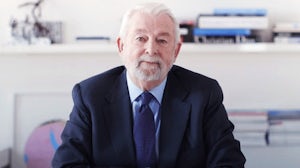Working as a Fashion Designer
1 hrs 45 mins read
Working as a Fashion Designer
From designers with celebrity status like Karl Lagerfeld and Virgil Abloh, who between them are creative directors at multiple fashion houses (Chanel, Fendi, Off-White and Louis Vuitton), to accessories designers and trend-led fast fashion design roles at businesses like Zara and H&M — today, the job title "fashion designer" can refer to an extremely broad spectrum of roles with a hugely diverse set of responsibilities.
To help make sense of a rapidly evolving industry, BoF answers your most frequently asked questions on the basics of working as a fashion designer.
1. What does a fashion designer do?
The role of a fashion designer has changed dramatically in recent years. In the luxury and fashion industries, designers now have significant media responsibilities, as well as multiple product streams to manage and emerging technologies to capitalise upon. Individuals must possess an appreciation of haute couture construction, as well as understand what products can be merchandised in way to drive wide appeal and engage younger shoppers. Leading designers are also now the creative directors of increasingly diverse teams of product specialists, from footwear specialists to denim designers and technical specialists like atelier workers. In design positions in apparel production (as opposed to fashion design), designers in developed economies are now expected to use digital design tools, such as Adobe Photoshop, InDesign and CAD — or Computer-Aided Design. Designers are responsible for the research, creative concept, technical drawings and prototyping of garments. They are typically grouped into teams dedicated to distinct consumer demographics or product lines, such as womenswear casual.
2. What is a fashion designer’s salary?
According to salary and compensation website PayScale, the average pay for a fashion designer in the UK is in excess of £25,000 a year ($32,000), while the US Bureau of Labor Statistics found the 2017 median pay for a designer is nearly $67,500. However, in the biggest labels, designers can earn multi-million-dollar contracts. The likes of Raf Simons, while acting as chief creative officer at Calvin Klein, was tipped to earn north of $18 million a year.
3. How do I become a fashion designer?
The career path of a fashion designer is not linear and there is no formulaic structure. For every Alexander Wang, who launched his label straight out of school, there are the Alessandro Michele’s, who worked doggedly at Gucci since 2002 under Tom Ford and Frida Giannini before rising to recognition as the brand’s creative director. Indeed, successful designers like Raf Simon’s and Louis Vuitton Men’s Virgil Abloh didn’t study fashion, but furniture design, and civil engineering and architecture respectively. However, graduating from a leading institution is the surest way to gain employment in the fashion industry. 76 percent of the alumni respondents to BoF’s Global Fashion School Rankings survey in 2017 gained a job within 6 months of graduating, although the return on investment for those attending lower ranked schools is questionable. The schools most successful in training their students to secure employment are deepening industry ties, investing in innovative technologies and digital resources and evolving their curriculums and course structures. Being based in a top fashion capital also provides a clear advantage. Aspiring designers would also be well advised to intern if possible while in school. At smaller companies, interns can learn more and learn faster, making time spent in smaller businesses often a much more efficient and effective learning experience.
4. Where can a fashion designer work?
Major houses and retailers are typically based in the fashion capitals: Paris, London, Milan and New York. Simply, being in a fashion capital boosts access to work opportunities and employment rates, which is especially true for those aspiring to enter the luxury sector. However, from the artisan workshops of Florence to the budding digital landscape of Berlin, Europe offers a plethora of locations to study and develop as a designer outside of the fashion capitals. Other promising locations include California, with Los Angeles indisputably fashion’s fifth capital. Although reports of a creative exodus from New York to the West Coast are overstated, the trickle of fashion professionals choosing to relocate to LA has increased to a steady stream. Elsewhere in the United States, Portland is a centre of sportswear design due to Nike being headquartered there, and Ohio is a traditional centre for apparel production. In Asia, Tokyo, Shanghai, Seoul and Beijing are all increasingly established fashion centres, with a rising scene in Xiamen. In Africa, Lagos, Abuja and Nairobi are all gaining global renown.
5. What can fashion design lead to?
Some fashion designers have gone on to lead celebrated careers in tandem to designing, such as Tom Ford as a film director, or Hedi Slimane and Karl Lagerfeld as photographers. Other areas in which fashion designers have been celebrated in later work include costume designing — which icons like Hubert Givenchy and Yves Saint Laurent both tried their hands at — as well as interior design, set design, education and journalism. Many designers have gone on to become respected business men and women.

















